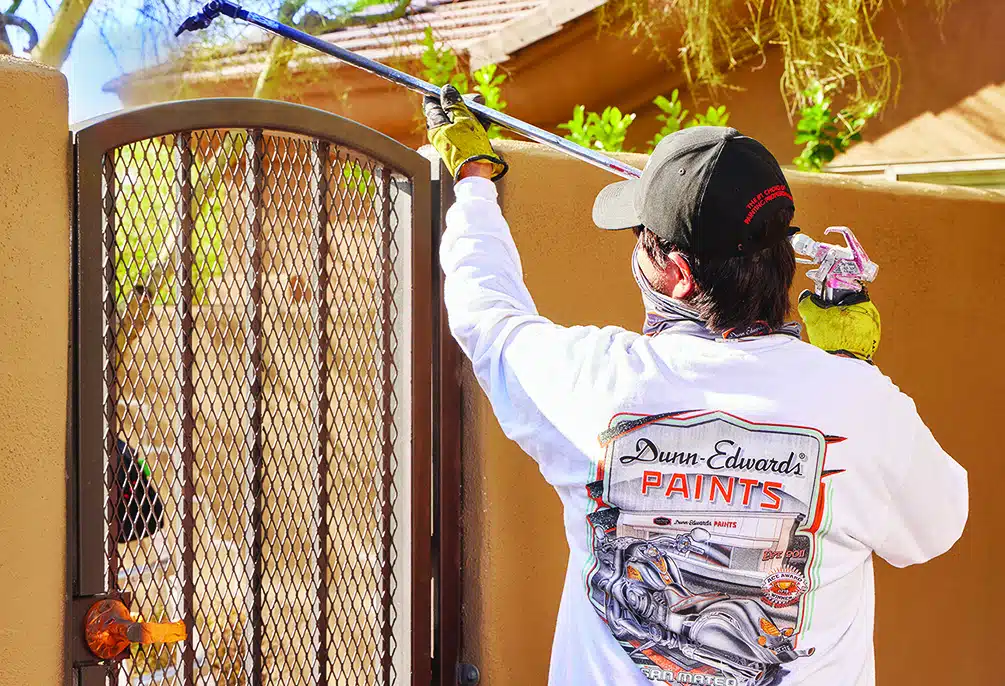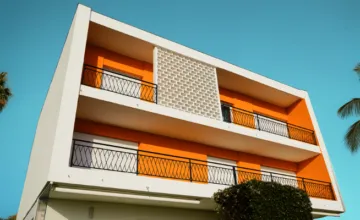Time to Prepare for Cool-weather painting? Think again!
09/09/2020 | Dunn Edwards |

Southwest contractors know that paint schedules are often at the mercy of factors beyond their control. One of the biggest is, of course, is our diverse, sometimes-harsh weather. Many assume our climate is simply, “hot and dry” — but it is far more complex. In fact, without proper planning — and, yes, a lot of patience — our fluctuating weather can make or break a project.
Our low deserts typically see higher temperatures and arid winds in early and mid-summer, while our mountain areas encounter cold and snow in winter. And, when you consider the strength (or lack thereof) of our summertime Monsoon season, as well as El Niño’s/La Niña’s effect on annual precipitation, it’s clear that our environment keeps us guessing!
So what do weather experts foresee in the next few months? And, more important, how might it affect you? (Not to give it away, but let’s just say don’t break out your rain gear yet.)
Thanks to a weaker 2020 monsoon season and a lack-luster La Niña, warmer-and-drier-than-average conditions are expected to stick around through the end of summer. In addition, a late-season heatwave is expected, which means we may see October/November temperatures averaging in the 90's to the 100's.
And, while moderate warm and dry conditions are helpful when painting, too much of a good thing can make your job tougher. Here are some factors to consider and tips that may help:
1. Baby, it’s Hot (and Then Some) Outside
• Temperature — When the mercury rises, paint naturally expands and can cause speckling, blistering, or surface cracking. The same goes for wood and other substrates, which may swell and leave you with peeling paint. But how hot is too hot? In general, if the temperature is rising higher than 95°F (35°C), it’s just too hot!
• Wind — Then there’s the wind! While light breezes can cut drying time, high winds force the paint to dry too quickly. The result? When paint bonds don’t have the chance to properly form, the paint’s durability suffers. Also don’t’ forget what wind brings: Debris, dust, particles, etc. — all of which may stick to your new paint job.
• Humidity — Not all Southwest states deal with humidity but, considering our fickle climate, you just never know! High humidity and rain can be a painter’s kryptonite. Even if you paint fast, the surface and coating will get wet and unable to dry properly — accelerating paint deterioration. Here’s the point: Don’t paint in the rain!
2. Choose Wisely
• Paint Type — Yes, 100-percent-acrylic paint works beautifully on most surfaces, providing good adhesion, stain-resistance, and cleanability — yet, not all acrylics are equal! Be sure to pay attention to the paint performance properties (e.g., adhesion, flexibility, color fade, gloss loss), as well as volume solids (lower percentage can mean poor performance). Last, if you’re looking for quality just remember: You get what you pay for!
• Starting Point — One of the best ways to combat heat is, well — stay out of the sun! While not realistic, you can “chase the shade." Start early and begin working on the shady side, as these walls should be cooler. Continue to follow the shade as the sun moves across the sky. Also, keep brushes and rollers loaded with paint; work in smaller areas; and keep your pace consistent and steady to ensure a consistent, first-class result. If you’re unsure, ask your local Dunn-Edwards store employee or rep.
• Color — When considering color, be sure to keep its Light Reflective Value (LRV) in mind. Keep in mind that darker colors (low LRVs) naturally attract more heat and energy. This can shatter the bond between prior coats and the substrate — especially wood. On the flip side, paler colors (high) LRVs reflect more light and don’t absorb as much warmth, which extends film durability.
3. The Last Few Tips
• Check the forecast. Try forecast.io, which gathers a range of varying weather predictions and provides the most likely scenario.
• Cover all open containers. High temps can create a paint “skin” atop your tray or container. When fully formed, these skins typically crack and fall into the paint, forming lumps. Cover up your containers and save yourself time and money.
• Hydrate. In hot and/or weather, paint starts to evaporate as soon as it’s poured. Consider adding clean water (up to 4 to 6 oz. per gallon) to keep your coating pliable. Avoid over-thinning by diluting paint in batches and not using the same bucket all day.
• Ice your can. It’s smart to keep your cans chilly on a hat day. Just toss a few ice cubes into the bucket before putting in the liner and filling with paint. This simple “ice bath” helps cool the paint so it doesn’t get too thick prior to application.
Do it right, or do it twice
The best route to a successful job is to research and understand your area’s climate. If you’re unsure, ask your local paint manufacturer. While we know you’re busy and want to finish your projects quickly but, if it’s too hot or windy, you may have to delay the job. It’s not ideal, but remember that being patient will help you deliver a job done right.
Sources: Builder magazine, Climate.gov, Weather.com














